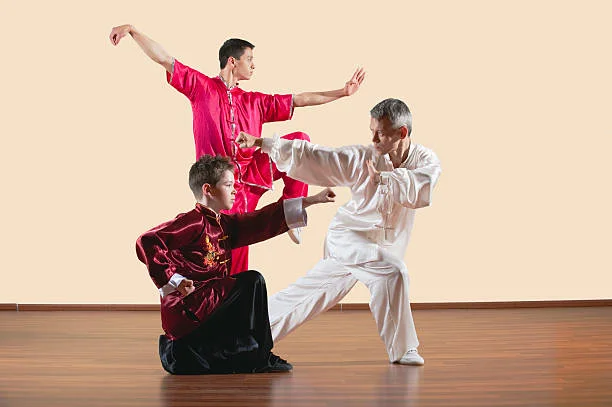When we hear the term martial art, what often comes to mind are powerful strikes, complex movements, and disciplined rituals. But what happens when we shift the focus from flashy techniques to the intricate web that connects them? That’s when we enter the world of system martial arts. So, what is a system matial art, and how does it differ from a style? Let’s unpack the answer by diving into a deeper understanding of what defines a complete, integrated martial system.
Understanding the Concept of a System Matial Art
A martial art system goes beyond merely being a set of combat techniques. It’s a holistic, concept-driven framework where techniques, principles, strategies, and philosophy come together in an interconnected and dynamic structure. Rather than focusing solely on “how” to execute techniques, a system asks “why” and “when” — guiding practitioners to not just replicate, but adapt and evolve within the art.
Take Systema, for example — a Russian martial art that emerged more prominently after the fall of the Soviet Union in the 1990s. Its approach integrates hand-to-hand combat, grappling, knife work, and even firearms training. Systema isn’t about memorizing fixed movements; instead, it revolves around fluid, real-world adaptability that mirrors the unpredictability of actual conflict.
System vs. Style: Not Just Semantics
It’s easy to confuse the two, but distinguishing between a system and a style is essential for any serious martial artist.
- A system offers a complete blueprint. It encompasses theory, practice, psychological readiness, physical development, and spiritual growth.
- A style, by contrast, emphasizes a particular interpretation or execution within a system. Styles are usually technique-based and reflect personal or regional variations.
To put it simply: systems provide the “why” and “what,” while styles focus on the “how.”
For instance, within Wing Chun — itself a complete system — there are several styles or lineages like Ip Man, Wong Shun Leung, or Yuen Kay Shan. Each emphasizes different elements such as footwork, timing, or strategy, but all adhere to the same foundational system.
Explore related articles to deepen your understanding before you go.
The System’s Anatomy: Interconnection Is Everything
At its core, a martial system must display three defining features:
- Elements – These include fundamental techniques, physical principles, kata (forms), sparring methods, and the psychological and philosophical underpinnings.
- Interconnectedness – These elements don’t function in isolation. Each aspect influences and supports the others. For example, understanding a striking technique involves not only motion but timing, intention, energy flow, and even emotional control.
- Purpose – A true system serves a functional goal: self-preservation, combat readiness, personal development, or spiritual growth. Without purpose, it becomes mere choreography.
A martial art becomes a system when it brings all of these pieces together cohesively, evolving with the practitioner and adapting to real-world situations.
From Atomistic to Holistic: Building a System Step by Step
Training in a system martial art begins with the atomistic — isolating individual components such as stance, movement, breath control, and mental focus. At first, these pieces may seem disconnected. However, as one progresses, the training evolves into a holistic practice where everything flows together.
This transition aligns with the Japanese concept of shu-ha-ri:
- Shu: Learn the fundamentals.
- Ha: Break away and internalize.
- Ri: Transcend and innovate.
Most martial artists remain in the “shu” stage, focused on basics. But to truly embody a martial art system, one must reach the “ha” and eventually “ri” — the stages where the practitioner begins to synthesize knowledge, adapt it, and express it uniquely.
Systema: A Case Study in Modern System Martial Arts
Systema illustrates how a martial system differs from traditional style-based approaches. Its training doesn’t rely on set forms or kata. Instead, it incorporates real-time drills that develop natural movement, resilience, breathing, and emotional control under pressure.
The system encourages adaptation — teaching students how to respond to attacks instinctively, using principles rather than memorized patterns. This approach embodies the essence of what makes a martial art a system — its ability to evolve, respond, and apply itself effectively in unpredictable environments.
The Essence of Systems Thinking in Martial Arts
Words alone often fail to describe what a system martial art feels like. That’s because systems operate not in linear sequences but in multidirectional, simultaneous interactions — much like a living organism.
Learning a system involves all senses: seeing the movement, hearing instruction, feeling the technique, and internalizing its purpose. It’s this multi-sensory, whole-body experience that enables deep learning.
To preserve its authenticity, a martial system must also be:
- Adaptive – Capable of evolving with time and context.
- Self-preserving – Focused on effectiveness in real-life situations.
- Dynamic – Balancing traditional foundations with contemporary application.
This is where many modern martial styles fall short. By isolating techniques and neglecting their interrelationships, they lose the system’s core — its synergy and functionality.
Final Thoughts: Why the System Matters
Understanding what is a system matial art helps martial artists go beyond surface-level training. A system offers a roadmap not only for self-defense but for self-discovery. It teaches structure without rigidity, tradition without stagnation, and adaptability without chaos.
In a world of ever-changing threats and environments, systems matter more than ever. They provide the integrated, responsive, and resilient foundation necessary to turn knowledge into action and technique into transformation.
Whether you train in Systema, Wing Chun, Karate, or any other martial discipline, look beyond isolated moves — seek the system within. That’s where mastery lives.
There’s plenty more where that came from—browse our other helpful content!







